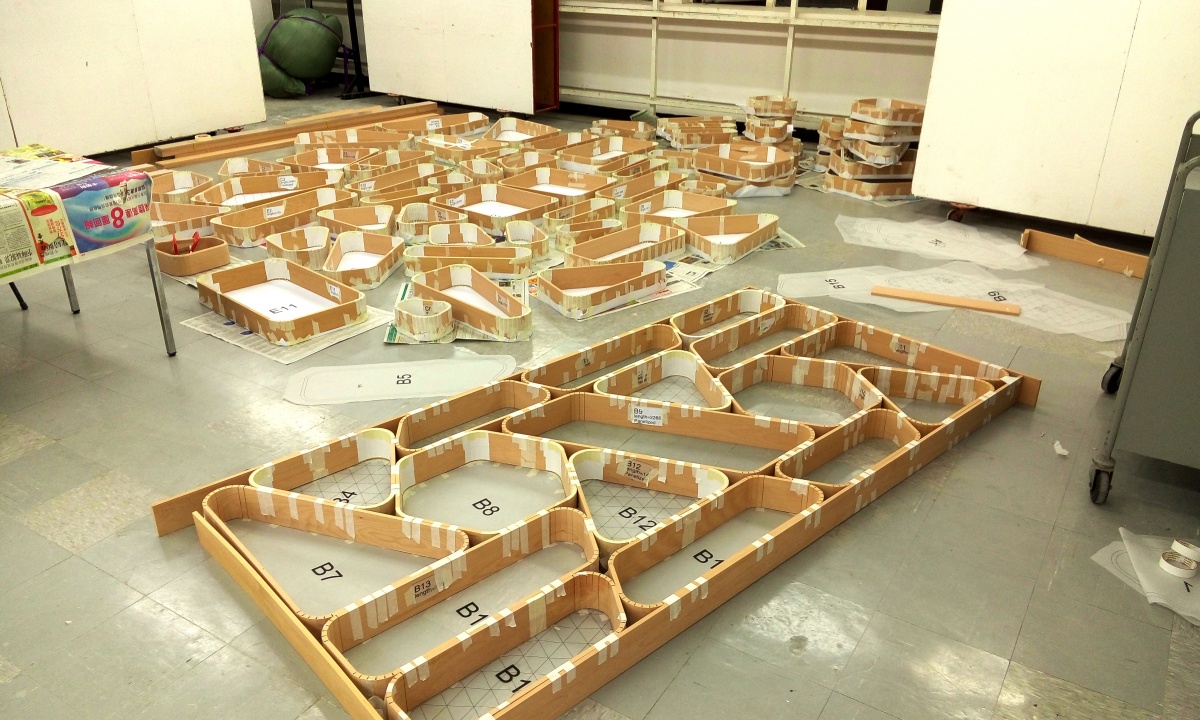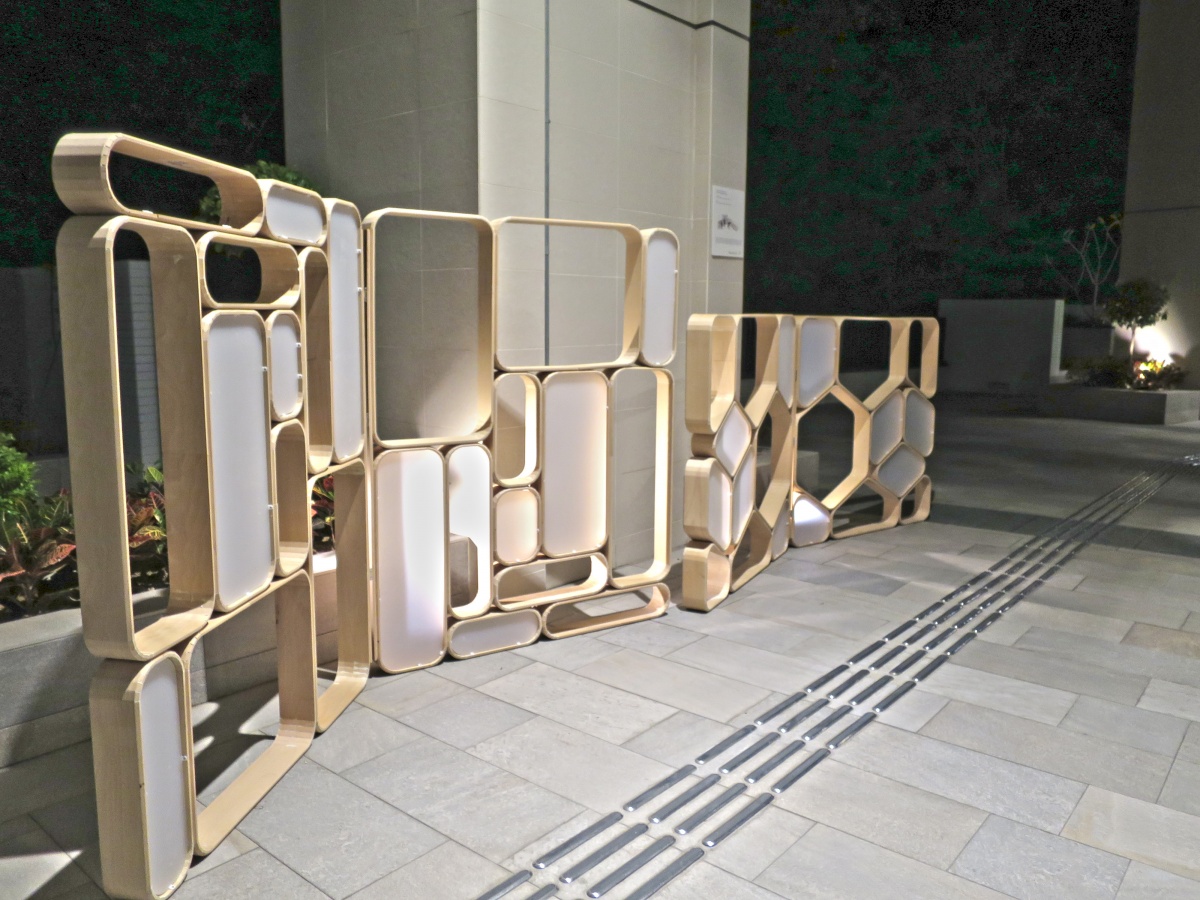Kerf bending is a traditional carpenter’s method to bend solid timber. A number of narrow channels are cut with a table saw leaving a thin layer of wood that is capable to bend. Given a target bend curve, advanced geometrical algorithms implemented as computer script generates CAM instructions to determine kerf cut location for precise bending without mold.
Instead of using a custom built computer numeric controlled (CNC) table saw to execute the instructions, which are prohibitively expensive for a furniture project. This project presents a method of combining digital computation with manual fabrication technique. A printed sheet of paper glued to the timber material combined with a custom made cross cut fence allow operators to cut precisely with a typical table saw by aligning a guiding mark. The process combines the advantages of digital precision and the efficiency of a human operator.

Kerf Bending Test

Printed Strips of paper to guide cutting

Cutting kerfs on table saw with custom made jig

Gluing

Before Sanding

On exhibit
Sponsor
This project is proudly sponsored by HKU Shun Hing College.
Team
This project is realized with the contribution of the following people from The University of Hong Kong:
Vivian Zhang Shuang (MArch 2) (Design)
Teresa Lai Wing Huen (BAAS) (Design)
Victor Leung (Demonstrator) (Design)
Donn Holohan (Fab Lab Manager) (Technical Advice)
Katie Ng (MArch2)
Wu Yi En (BAAS1)
Yu Ka Long (BAAS1)
Canossa Chan (BAAS2)
Natalie Sitt (BAAS1)
Gaby Sanchez (BAAS3)
